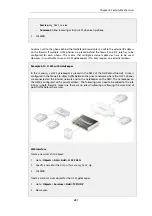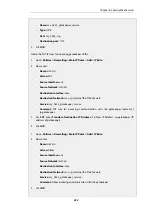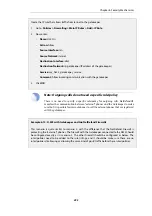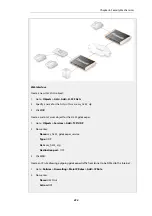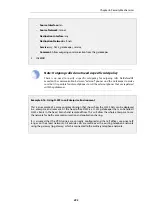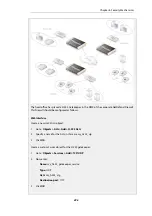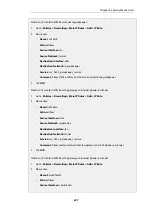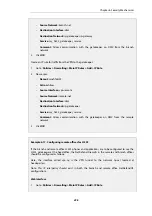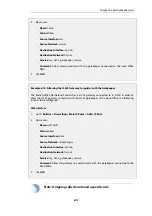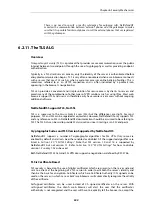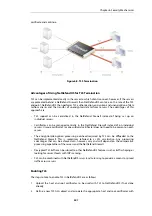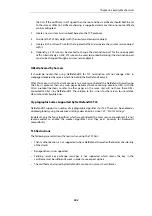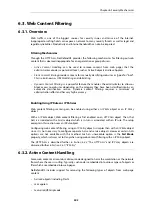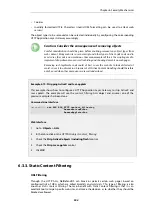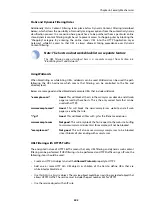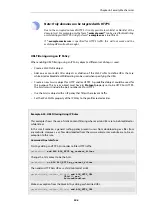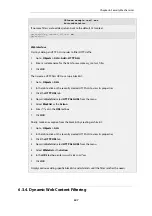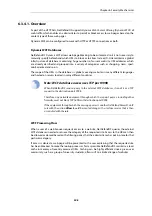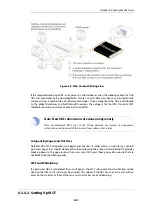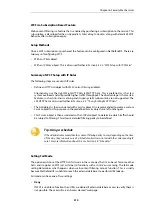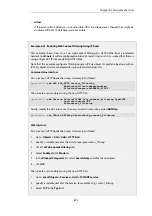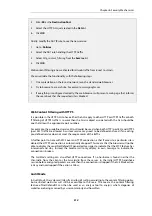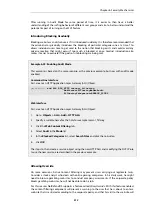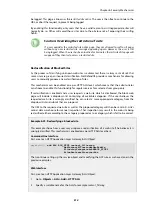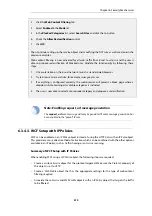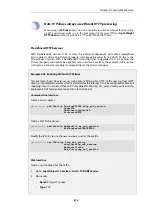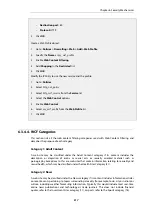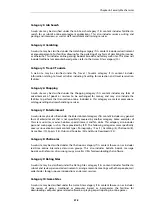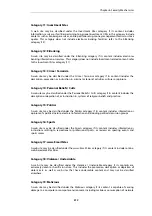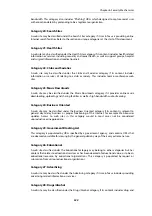
Static and Dynamic Filtering Order
Additionally, Static Content Filtering takes place
before
Dynamic Content Filtering (described
below), which allows the possibility of manually making exceptions from the automatic dynamic
classification process. In a scenario where goods have to be purchased from a particular online
store, dynamic content filtering might be set to prevent access to shopping sites by blocking the
"Shopping" category. By entering the online store's URL into the HTTP Application Layer
Gateway's whitelist, access to that URL is always allowed, taking precedence over Dynamic
Content Filtering.
Note: The hosts and networks blacklist is a separate feature
The URL filtering option described here is a separate concept from Section 6.8,
“Blacklisting Hosts and Networks”.
Using Wildcards
When blacklisting or whitelisting URLs, wildcards can be used. Wildcards can be used the path
following the URL hostname which means that filtering can be controlled to the file and
directory level.
Below are some good and bad blacklisted example URLs that include wildcards:
*.example.com/*
Good. This will block all hosts in the
example.com
domain and all web
pages served by those hosts. This is the only correct form that can be
used with HTTPS.
www.example.com/*
Good. This will block the
www.example.com
website and all web
pages served by that site.
*/*.gif
Good. This will block all files with
.gif
as the filename extension.
www.example.com
Not good. This will only block the first request to the web site. Surfing
to
www.example.com/index.html
, for example, will not be blocked.
*example.com/*
Not good. This will also cause
www.myexample.com
to be blocked
since it blocks all sites ending with
example.com
.
URL Filtering with HTTPS Traffic
The encrypted nature of HTTPS traffic means that only URL filtering and dynamic web content
filtering can be performed. If URL filtering is to be performed on HTTPS traffic using an IP rule, the
following steps should be used:
•
Create an
HTTP ALG
object and set the Allowed Protocol property to
HTTPS
.
•
Add one or more
HTTP ALG URL
objects as children of the ALG to define URLs that are
whitelisted or blacklisted.
•
Use this ALG in a
Service
object. The service object could be an existing or created object that
allows HTTPS traffic. The service must include the port number 443 for HTTPS.
•
Use the service object with an IP rule.
Chapter 6: Security Mechanisms
505
Summary of Contents for NetDefendOS
Page 30: ...Figure 1 3 Packet Flow Schematic Part III Chapter 1 NetDefendOS Overview 30 ...
Page 32: ...Chapter 1 NetDefendOS Overview 32 ...
Page 144: ...Chapter 2 Management and Maintenance 144 ...
Page 284: ...Chapter 3 Fundamentals 284 ...
Page 392: ...Chapter 4 Routing 392 ...
Page 419: ... Host 2001 DB8 1 MAC 00 90 12 13 14 15 5 Click OK Chapter 5 DHCP Services 419 ...
Page 420: ...Chapter 5 DHCP Services 420 ...
Page 573: ...Chapter 6 Security Mechanisms 573 ...
Page 607: ...Chapter 7 Address Translation 607 ...
Page 666: ...Chapter 8 User Authentication 666 ...
Page 775: ...Chapter 9 VPN 775 ...
Page 819: ...Chapter 10 Traffic Management 819 ...
Page 842: ...Chapter 11 High Availability 842 ...
Page 866: ...Default Enabled Chapter 13 Advanced Settings 866 ...
Page 879: ...Chapter 13 Advanced Settings 879 ...

